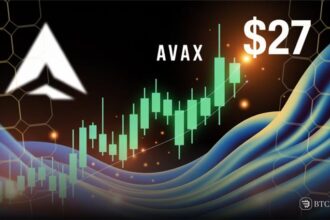Grant Cardone is building a bold investment path that blends real estate with Bitcoin. The CEO of Cardone Capital has started a series of new funds that combine both assets. He plans to raise over $1.2 billion by the end of the year.
Strategy provides a hybrid of property and cryptocurrencies, starting with a much more conservative approach and growing in aggressiveness. This approach was initiated after a secret meeting held with the Bitcoin protagonist, Michael Saylor.
Cardone observed that Bitcoin treasury firms were becoming more popular. As opposed to jumping head-on into this area, he played it safe by investing in what he knows best, real estate. His first few funds are almost purely focused on the property markets, with only a small portion going into bitcoin trading. By and by, it is his goal for both of these areas to represent an equal split of 50 %.
Bitcoin powers growth in Cardone’s 10X fund
This is the most recent of such beliefs, and it is referred to as the 10X Miami River Bitcoin Fund. The name perfectly fits his brand and shows that he wants to achieve two things at once. Cardone plans on creating up to twelve of these hybrid funds. Each fund buys underpriced commercial real estate.
He exploits the difference in market value and purchase price to purchase bitcoin. This structure provides a stable cash inflow from the property, yet Bitcoin’s growth potential is being built on. His approach concentrates on rent income, property discounts, and tax savings from depreciation, as there are three critical areas.
All of those factors together create the mechanism that Cardone refers to as a “flywheel.” As each fund matures, the gains compounded over time help support future fund launches. The result is a system that amplifies his bitcoin exposure without, however, compromising on real estate reliability.
Cardone’s bold Bitcoin Real estate play
According to Cardone, the old-style real estate funds will not be able to match the pace of the market. He does this by comparing his hybrid model with real estate investment trusts, which, on average, have a lower yearly return. According to him, through the integration of Bitcoin as well, it could even reach up to 40% per annum.
The number is more conceptual at this point. “There are many things that we do as a business organization that are difficult to quantify but yet still important,” Cardone says. Although he is comparing his new strategy with the one from the past, in essence, he feels that they have different approaches. In a world where hype and volatility are rampant, Cardone represents just the right blend of audacity and prudence.
He avoids putting all eggs in one basket and is still not ready to overlook where the wagon keeps its course. With billions already pouring into his funds, it seems that investors are now well prepared to be his followers gradually, one building, then another; one bitcoin and then a next.







